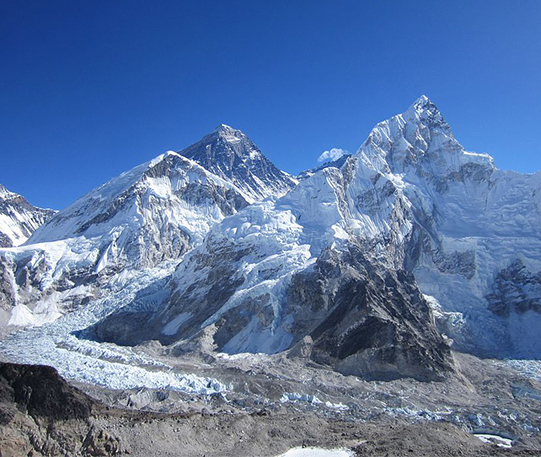
By Jim Brace-Thompson
What is the exact height of Mount Everest? Up to now, the answer would have varied whether you asked a geologist from China or one from Nepal. And in either case, you would have been wrong!
There are two ways to measure the height of the highest mountain on Earth. There is the “geological height,” which measures the height of the mountain’s solid rock.
In 2005, China calculated this to be 8,844.43 meters or about 29,017 feet. Then there is the “snow cap height,” which measures the cake and the icing on top, or the snow and ice cap blanketing the mountain. Taking this into consideration yielded a result of 8,848.13 meters (29,029 feet).
By the way, this isn’t too far off from an 1856 estimate of 8,840 meters, or 29,002 feet, which ain’t bad for an estimate based on 19th-century technologies! If you think that is high, consider this: scientists believe that 13 million years ago, Mount Everest may well have towered 12,000 meters (over 39,000 feet) into the air!
Measurement Debate
However, Nepal has long taken issue with Chinese measurement. China argued for the geological height, while Nepal preferred the snow cap height to be the mountain’s officially registered height. Not that it mattered, because just when we thought we got it right, along came a massive 7.8 magnitude earthquake in 2015 that seemed to give a bump to Mount Everest. Thus, in 2017 Nepal started a re-measurement project from its south side of the mountain, as did China from the north side. Together, they agreed to make a joint announcement of their combined results simultaneously from Kathmandu and Beijing.
The new “official” height? As announced on December 8, 2020, it is 8,848.86 meters or 29,032 feet. That, by the way, is the snow cap-height. It will require exhausted mountain climbers to make at least one more step before reaching that legendary summit while just slightly higher than before.
But hold on! It is thought that, due to tectonic pressures, the mountain may be pushed upwards by some 4 millimeters a year, give or take a millimeter or two lost to erosion. So when we think we’ve got it right, think again! With Mount Everest, as with any mountain, height is not a fixed measure but rather an ever-changing process.














